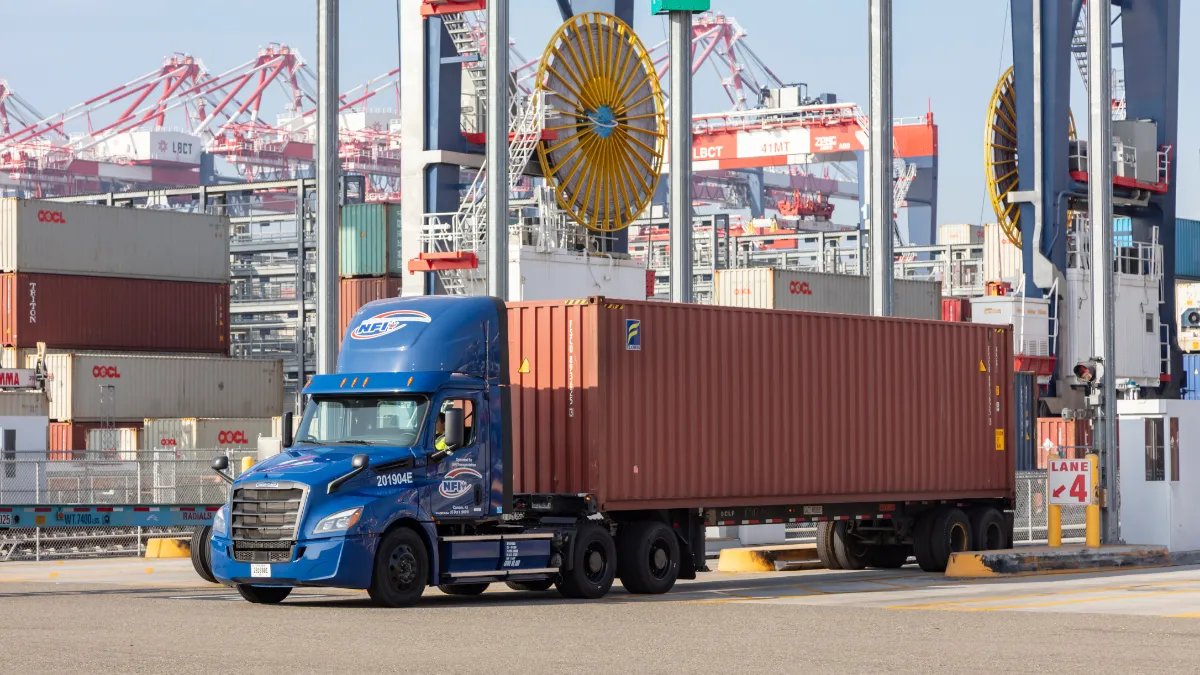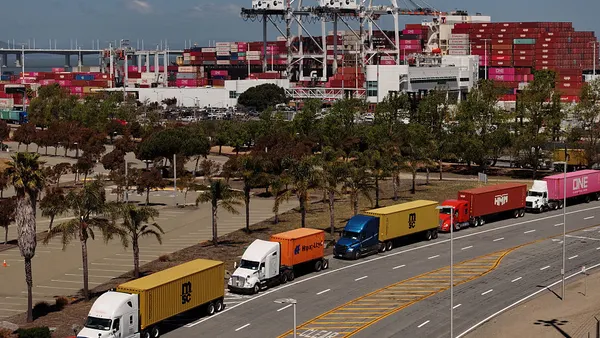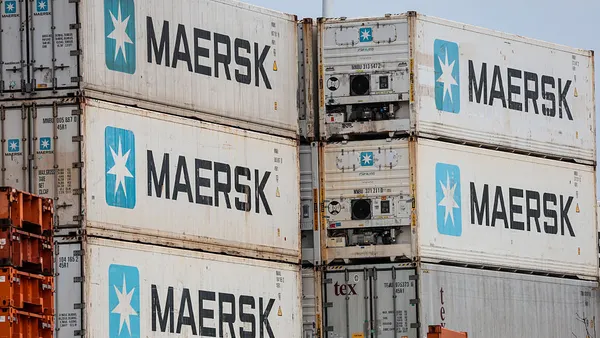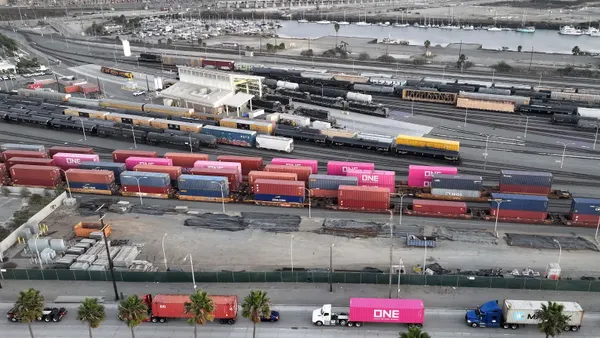Dive Brief:
- Money spent on truck shipments reached its highest level on record in Q2 as capacity constraints and rising fuel prices clashed with increased industrial output, according to the U.S. Bank Freight Payment Index.
- The index tracking domestic truckload and LTL freight modes increased 10.1% from Q1 to 233.6, a record high. All U.S. regions saw an increase from Q1, with the Northeast leading the way at 14.6%.
- "These robust gains stem from extremely tight truck capacity due to a profound driver shortage, as motor carriers have been unable to increase supply sufficiently to meet the growing demand," U.S. Bank's quarterly index report said.
Dive Insight:
The truck driver shortage existed well before the COVID-19 pandemic began to shake up supply chains, but the recent growth in consumer demand has exacerbated the issue. Freight shipments remain below pre-pandemic levels but increased 4.4% from Q1, according to data from U.S. Bank.
Pricing has increased to account for more shipping volume, along with higher diesel prices, as capacity remains tight. Bobby Holland, U.S. Bank vice president and director of Freight Data Solutions, said rates will remain elevated because many factors contributing to Q2's record-breaking spend have not yet abated. U.S. Bank's data for the index goes back to 2010.

"We still have the truck driver shortage, we still currently have higher fuel prices, and we still have the chip shortage, which has an ancillary impact on getting more trucks on the road," Holland said.
These challenges are playing out across all regions, but the Northeast saw the sharpest increase in spend from Q1 due to "pretty significant capacity limitations," according to the report. The West saw a 13.9% increase from Q1 which the report attributed in part to a surge in consumer goods imports from Asia boosting truck activity.
Limited supply has forced shippers to put more freight into the spot market as opposed to contract freight services, the report said. But some shippers are beginning to lock down higher-than-normal contract rates rather than commit to even pricier spot rates, Holland said.
Spot posts in June fell 6% compared to May but are up more than 101% YoY, according to DAT data.
"With demand for trucking services high and shippers still needing to meet their timetables, they're paying more to move product," said Bob Costello, senior vice president and chief economist for the American Trucking Associations, in a statement. "As we continue to work through structural challenges like driver shortages, we expect the spend index to remain elevated."
Even with higher contract rates pulling volume from the spot market, capacity is still hard to come by. LTL carriers like FedEx Freight and J.B. Hunt have implemented volume controls to keep service levels high.
"Tight capacity on the truckload side has meant the carriers are only accepting about three-quarters of all the [contract] loads that shippers send out to them," DAT Principal Analyst Dean Croke said earlier this month.















